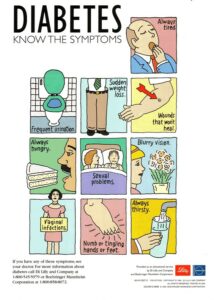Diabetes and Physiotherapy
Diabetes is a metabolic disorder in which the body is impaired in regulating sugar levels, specifically glucose, in the blood, either by poor sensitivity to the protein insulin, or due to inadequate production of insulin by the pancreas. As per the International Diabetes Federation (IDF), approximately 415 million adults between the ages of 20 to 79 years had diabetes mellitus in 2015.With unhealthy lifestyle and stress, Diabetes Mellitus is one of the leading causes of the diseases in the world.
The following are few of the major symptoms of Diabetes:

- Increased thirst,hunger and urination
- Lack of energy and fatigue
- Delayed wound healing
- Bacterial and fungal infections
- Numbness and tingling in feet and hands
Whilst diabetes isn’t the major cause of death around the world, the complications from Diabetes can affect different systems within your body and eventually lead to poor quality of life.
How do we manage it with Physiotherapy?
Whilst there are medications and diet modification to manage diabetes, exercise has been shown to be an effective way to manage blood glucose levels, improve insulin resistance and reduce bad cholesterol levels.
The National Physical Activity Guidelines for Australian Adults recommend:
- Think of movement as an opportunity, not an inconvenience.
- Be active every day in whatever way you can.
- Aim for at least 30 minutes of moderate-intensity physical activity on most days of the week.
- Do strength training exercises on at least 2 days per week
- Break up long periods of inactivity as often as possible, and
- If possible, also enjoy some regular, vigorous activity for extra health and fitness.
You can meet up with your Physiotherapist and devise a plan with them to improve your strength and endurance. You can also attend many of their group exercise sessions to lead a healthy lifestyle, build muscle strength and keep those glucose levels down. The physios take into account any pre-existing musculoskeletal injuries and your exercise preference when devising a plan for you.
Blog written by Bhargavi Parab,Physiotherapist
Sources: Goyal R, Jialal I. Type 2 Diabetes. [Updated 2023 May 8]. In: StatPearls [Internet]. Treasure Island (FL): StatPearls Publishing; 2023 Jan-. Available from: https://www.ncbi.nlm.nih.gov/books/NBK513253
LiveLighter (Be active & sit less every day), Healthy WA (Physical activity), Department of Health (Australia’s Physical Activity and Sedentary Behaviour Guidelines


